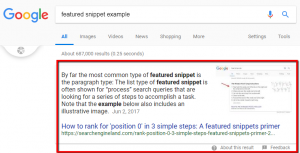The best SEO strategies are the strategies that improve the usefulness and relevance of a website (even Google, our digital overlord, says so). This isn’t really anything new. However, the way search engines define “useful” and “relevant” is constantly changing.
Some like to interpret this as long-term job security; others see it as a challenge. How can we optimize content to be not only useful and relevant, but the most useful and relevant on the web? Keyword rankings and fresh blogs are great, sure … but the solution you’re looking for is branding.
Sound stressful? I feel you. But don’t sweat it. Here are 3 tips and tricks for using brand theory to your advantage in the SERPs:
1. Create experiences, not content
Writing content is easy. Writing user-driven, informed, credible, findable and desirable content isn’t. Users are looking for the best content, prices and service, and they’re willing to sink time into finding it (but not too much time).
So, why isn’t that the end of it? Why doesn’t everyone just slap a banner on their homepage that says, “We’re well-documented, affordable and we’ll bend over backward for you”?
It’s because the human brain is obsessed with subliminal, modest messaging. Your content, web design and even that big ol’ banner is all part of a user’s experience on your website. That’s what it’s really all about: Creating an experience for users that answers their questions, fulfills their needs and leaves them feeling taken care of. And, at its core, brand is an experience—so SEO should follow suit.
Do this by:
- Weaving key selling points into every piece of content
- Remember that sometimes, less is more. Content shouldn’t be overwhelming. Subliminal reasons to convert should be.
- Be mindful of keyword optimization. Where are you putting the keywords on the page? What keywords might the user be skimming for? How can you make it easy to find them?
2. Focus on branding in the SERPs
We all know how important keywords are. (If you don’t, surprise! They’re really important.)
Effective branding doesn’t begin and end on a website. As soon as users hit “search” on Google, they’re starting their journey with your brand, making the SERP an incredibly powerful brand tool.
Review your target demographic, and ask yourself, “What would this person search to find my site?” Take age, location, income and need into account. I guarantee my 61-year-old dad searches for products/services differently than I do—that’s why we’re loyal to different brands for similar products. We’re part of completely different target demographics, and those differences should be top-of-mind while optimizing. I’m not saying to stop looking at search volume or competitiveness. Don’t do that. Not ever. Just don’t let it be the beginning and end of your research.
Likewise, we as a community need to get over keyword-optimized meta descriptions. They’re canceled, and we’re done with them. (Seriously, I mean it—it’s been over 10 years since Google announced that meta descriptions don’t factor into rankings). However, they do factor into CTR, which is a ranking factor … so they need to be good. Don’t be afraid to bring some brand personality to your meta descriptions. Even if it’s something small (an exclamation point, a pun, hyper-approachable language), it’s the deciding factor users look for.
3. The Audience report in Google Analytics
We’re all guilty of underusing certain GA reports. I mean, the sheer amount of information in there can be overwhelming. That said, the Audience report should be your branding data bible. It gives information directly related to user personas, which means it tells you whether or not you’re hitting your target demographic.
If numbers for your target demographic aren’t great, the problem isn’t rankings, content or new service areas; those are the result. The problem is that you’re not effectively communicating worth to your target demographic—bad rankings, neglected content and overlooked pages are the result of that miscommunication.
The solution is branding. Take a step back, and put yourself in the user’s shoes. Consider the following from your target demographic’s perspective:
- What tone would resonate best with me?
- What do I lack? Information? Fun? Certainty? How long am I willing to look for it on a website?
- What device am I using? Am I likely to switch to another one?
- What other brands am I comparing the website to? What experience do they offer?
Putting it all together
As an SEO, you probably interface with your clients’ websites on a regular basis. That means their digital brand is subject to your optimizations—a blessing or a curse, depending on how you look at it. I favor the former.
Branding isn’t easy, and it’s not inextricably linked to SEO. But a basic understanding of branding concepts can be the difference between conversions and bounced sessions.
TLDR;
- Recognize that your website is an experience. Act accordingly.
- Don’t be shy—bring your brand to the SERPs.
- Use the dang Audience report in Google Analytics.





















